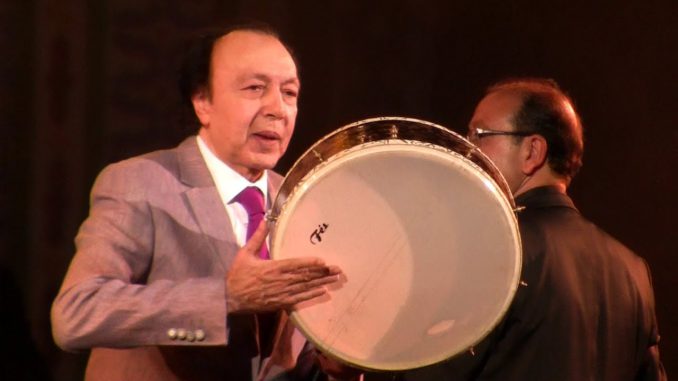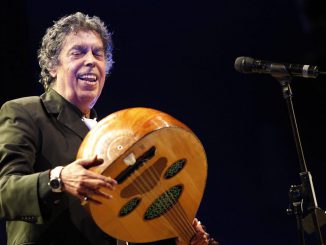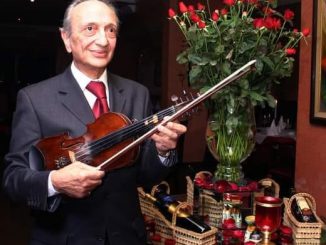
Haim Botbol grew up in an artistic environment. His father, Sheikh Jacob Abitbol (that is his real family name) was one of the pioneers of Malhoun art in Fez.
Haim Botbol (which in Arabic means the man with the “drum”) founded his first orchestra at the age of 16. He has excelled in all genres of music and singing from Aïta to Raï, from popular song to Gharnati. He masters many musical instruments, including the Oud and Bendir, and writes and composes the lyrics of his own songs.
Haim Botbol, was born in Fez in 1937. With his father and brother Marcel, violinist, and Claude, rhythmist, he formed a group that presented many fascinating heritage works, before separating from them in 1950 and joining the artist Salim Al-Halali, the Algerian Jew in love with Morocco, with whom he formed an independent duo that presented many timeless Maghreb songs. It was during this same period that he opened up to different musical styles and trends such as Salsa, Reggae, Funk and Gnaoui.
Haim Botbol’s repertoire is rich in many songs that have made him a pioneer of Moroccan Jewish folk art. These include “Jaya Tomobile”, “Salba Salba”, “Ach Ja Yadir”, “Lahabib alli walaftou”, “Lassmar”, etc.
Haïm Botbol is considered as an art school in his own right, having contributed to the training of many Moroccan artists and musicians who have received his help and blessing. This is the case of Abdelwahab Doukkali, Fathallah Maghari, and Pinhas, among others.
In addition to radio and television, Haim Botbol was the star of Moroccan weddings and events. He was also solicited by the most famous cabarets and discos in the economic capital such as “Sijlmasa”, “Lombassi”, “Rissani” and “Riad Salam”. In addition, he was one of the favorite artists of HM King Hassan II, who had always invited him to concerts in his palaces.
Haïm Botbol, who has always refused to withdraw from the art scene despite being over 80 years old, was the first Moroccan artist to use an electric guitar and the first singer to wear a suit, as well as the first male artist to use the bendir, an instrument considered at that time to be the prerogative of women.



Be the first to comment